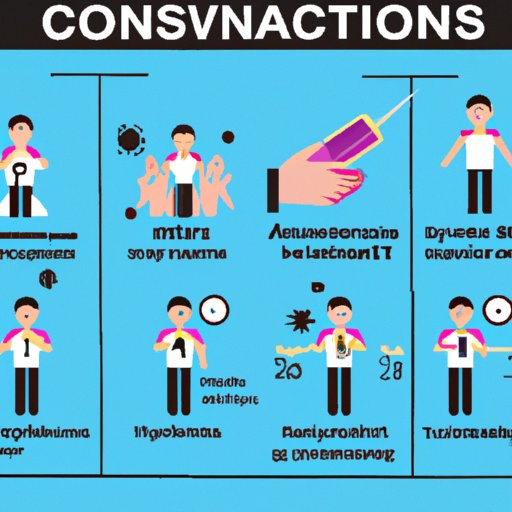Exploring the Duration of Contagiousness: How Long Can You Spread Illness?
When you become sick with a contagious illness, it’s important to know how long you may be contagious for. While some illnesses can be spread in just a few days, others may remain contagious for weeks or months. Understanding how long you may be contagious for can help reduce the spread of illness and protect yourself and those around you.
An Overview of How Long You Stay Contagious After Becoming Sick
The length of time that you may remain contagious depends on the type of illness you have. Generally, you will remain contagious from the time you first begin experiencing symptoms until you have been symptom-free for at least 24 hours. In some cases, however, you may be contagious even before you start showing any signs of illness. This is known as an “incubation period” and occurs when the virus or bacteria is in your body but hasn’t yet caused any symptoms.

A Guide to How Long Different Types of Illnesses Remain Contagious
Here is a look at how long different types of illnesses remain contagious:
Common Cold
The common cold is usually caused by one of more than 200 viruses. You may be contagious for up to two weeks after becoming infected. Symptoms typically last for 7-10 days.
Influenza
Influenza (the flu) is caused by a virus. You may be contagious for up to one week after becoming infected. Symptoms typically last for 3-7 days.
Stomach Flu
Stomach flu, also known as gastroenteritis, is usually caused by a virus or bacteria. You may be contagious for up to two weeks after becoming infected. Symptoms typically last for 1-7 days.
Chickenpox
Chickenpox is caused by the varicella-zoster virus. You may be contagious for up to two days before the rash appears until all the blisters have formed scabs, which typically takes 5-7 days. Symptoms typically last for 10-14 days.
Measles
Measles is caused by the measles virus. You may be contagious for up to four days before the rash appears until four days after the rash appears. Symptoms typically last for 7-10 days.
Mumps
Mumps is caused by the mumps virus. You may be contagious for up to five days before the swollen glands appear until nine days after they appear. Symptoms typically last for 7-10 days.
Whooping Cough
Whooping cough, also known as pertussis, is caused by the Bordetella pertussis bacteria. You may be contagious for up to two weeks after becoming infected. Symptoms typically last for 6-10 weeks.
How to Know When It’s Safe to Return to Work or School After Being Sick
It’s important to know when it’s safe to return to work or school after being sick. Guidelines vary depending on the type of illness you have and the guidelines of your workplace or school. Generally, it’s best to wait until you have been symptom-free for at least 24 hours before returning to work or school. In some cases, it may be recommended to wait longer. It’s also important to monitor your health and symptoms while recovering to make sure you don’t become contagious again.

The Risks of Continuing to Spread Germs After You Feel Better
Even after you start feeling better, it’s important to remember that you may still be contagious. The virus or bacteria that caused your illness may still be present in your body, and you may be able to spread it to others. To reduce the risk of spreading germs, it’s important to take steps to ensure that your environment is as clean and healthy as possible.

Tips for Reducing the Risk of Spreading Illness to Others
To reduce the risk of spreading germs, it’s important to practice frequent hand washing and proper disposal of tissues and other items used while sick. Additionally, staying home when sick and cleaning and disinfecting frequently touched surfaces can help reduce the spread of illness.
Preventing the Spread of Illness by Knowing How Long You Are Contagious
Knowing how long you are contagious for can help you take the necessary steps to reduce the risk of spreading illness to others. Adopting preventative measures such as frequent hand washing and properly disposing of tissues and other items used while sick can help reduce the spread of germs. Taking these steps can help ensure that your environment is as clean and healthy as possible.
(Note: Is this article not meeting your expectations? Do you have knowledge or insights to share? Unlock new opportunities and expand your reach by joining our authors team. Click Registration to join us and share your expertise with our readers.)
